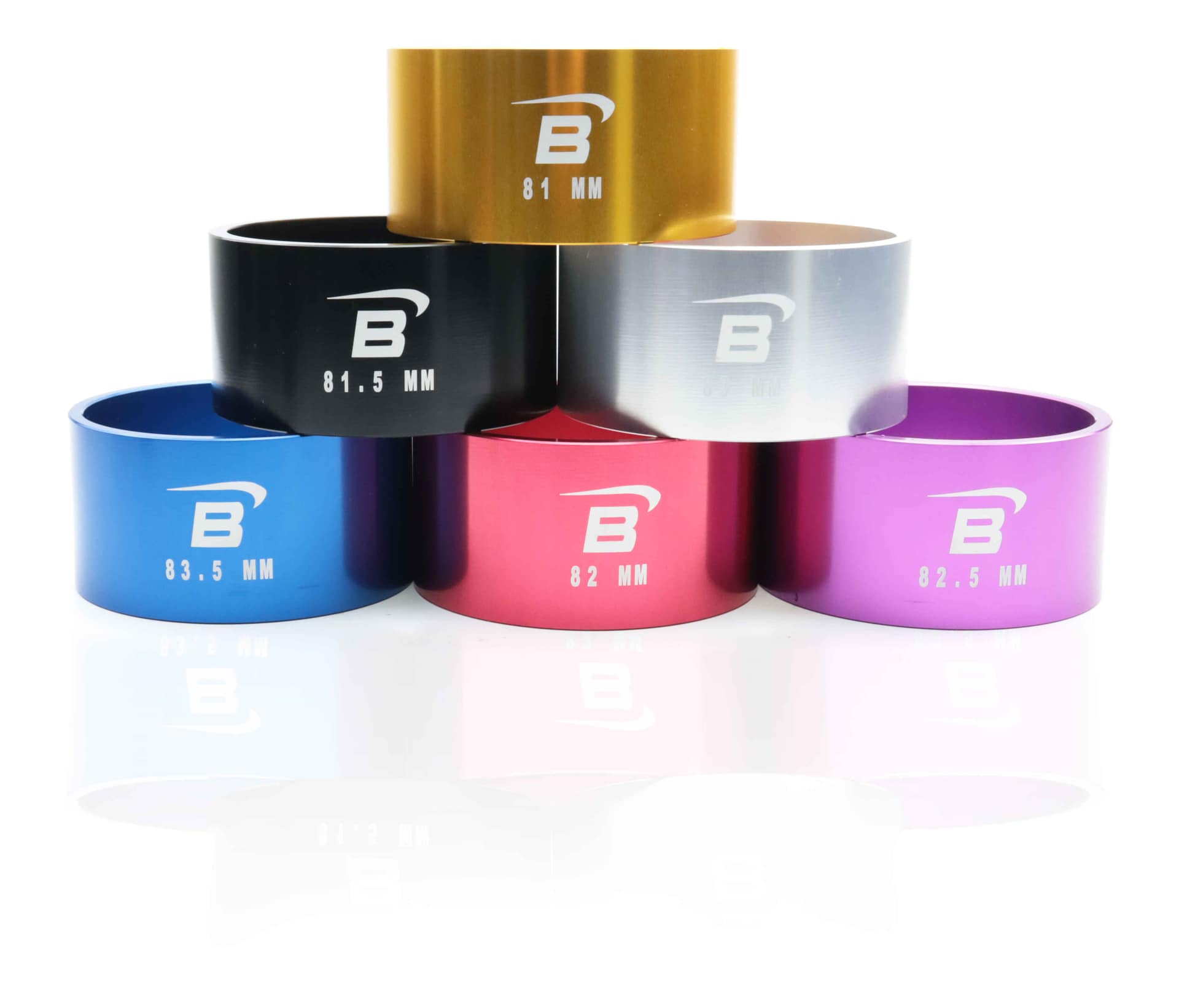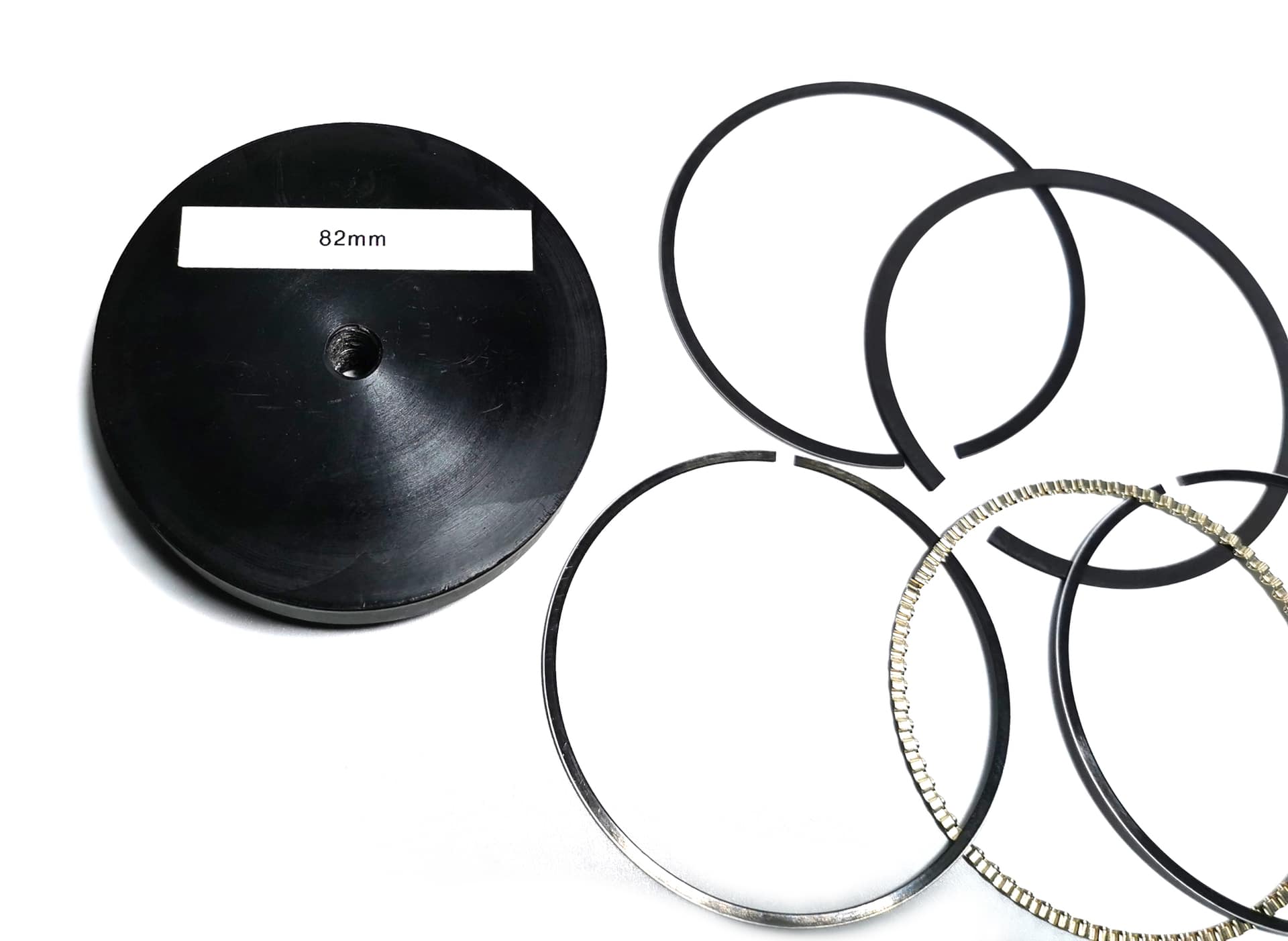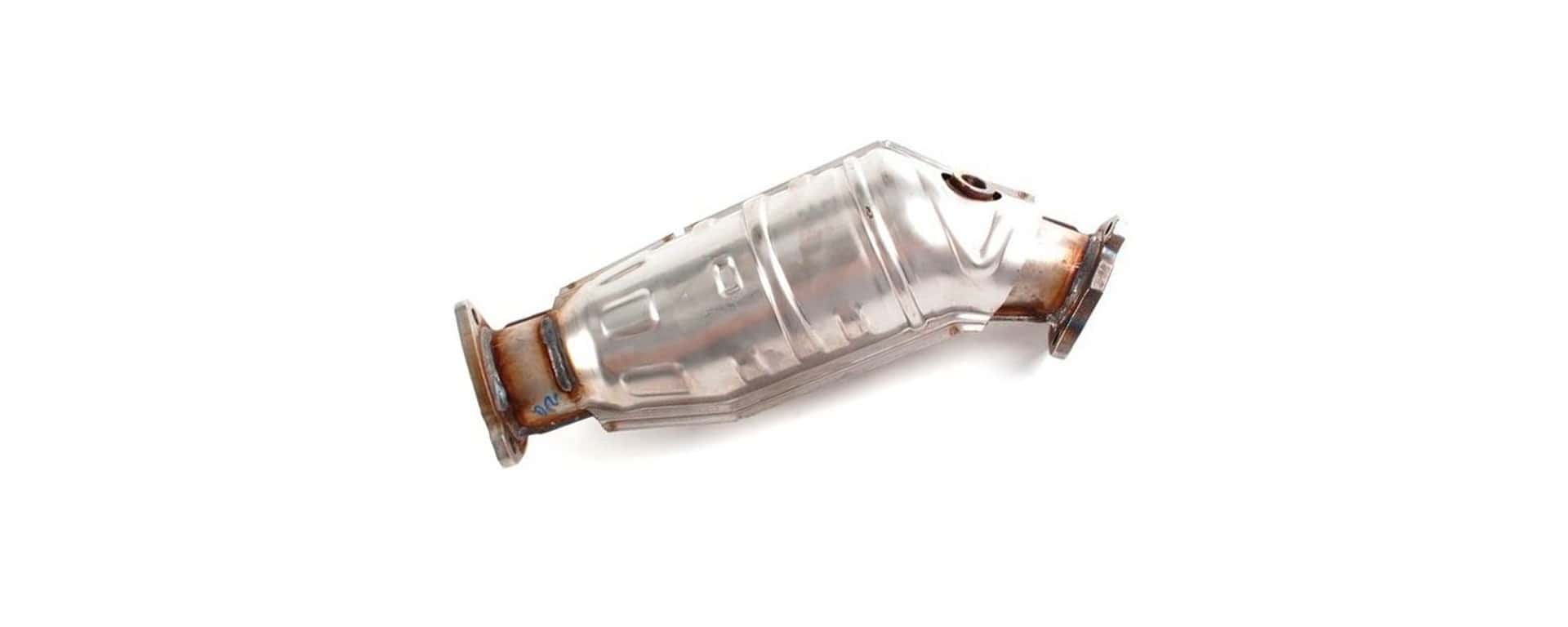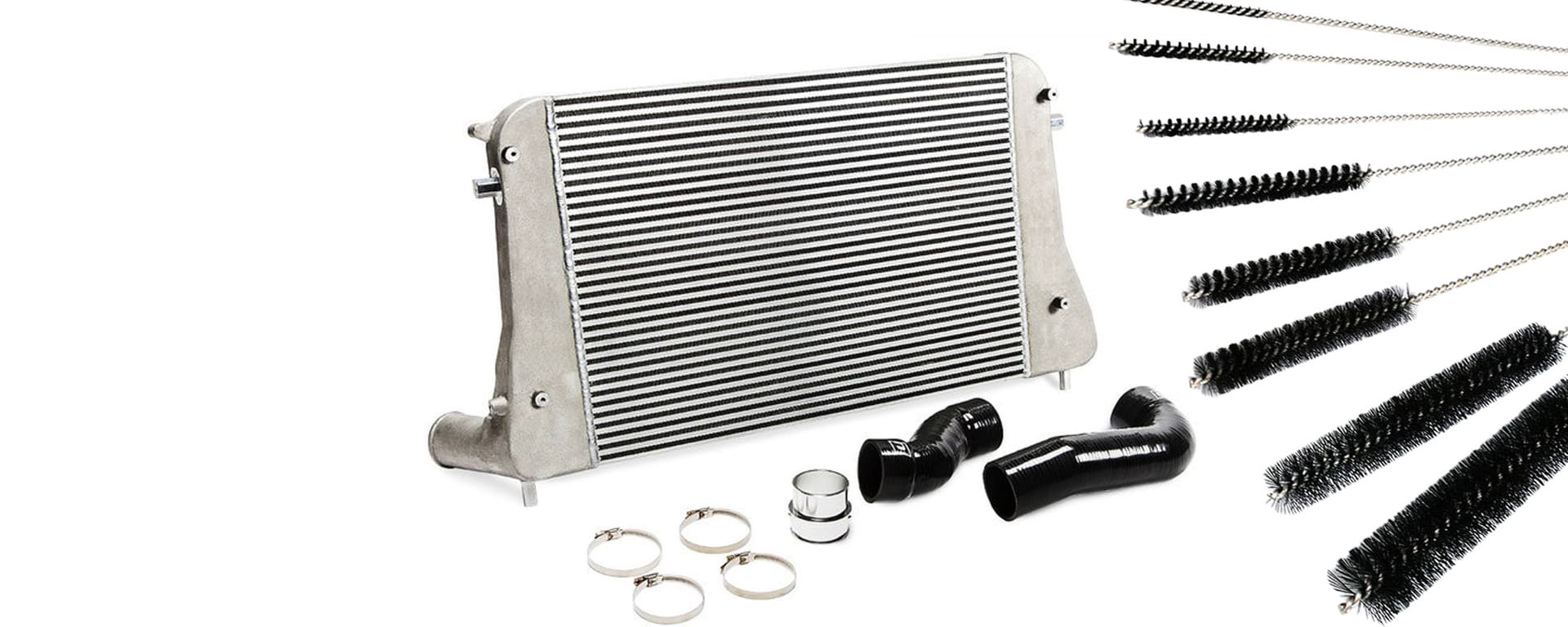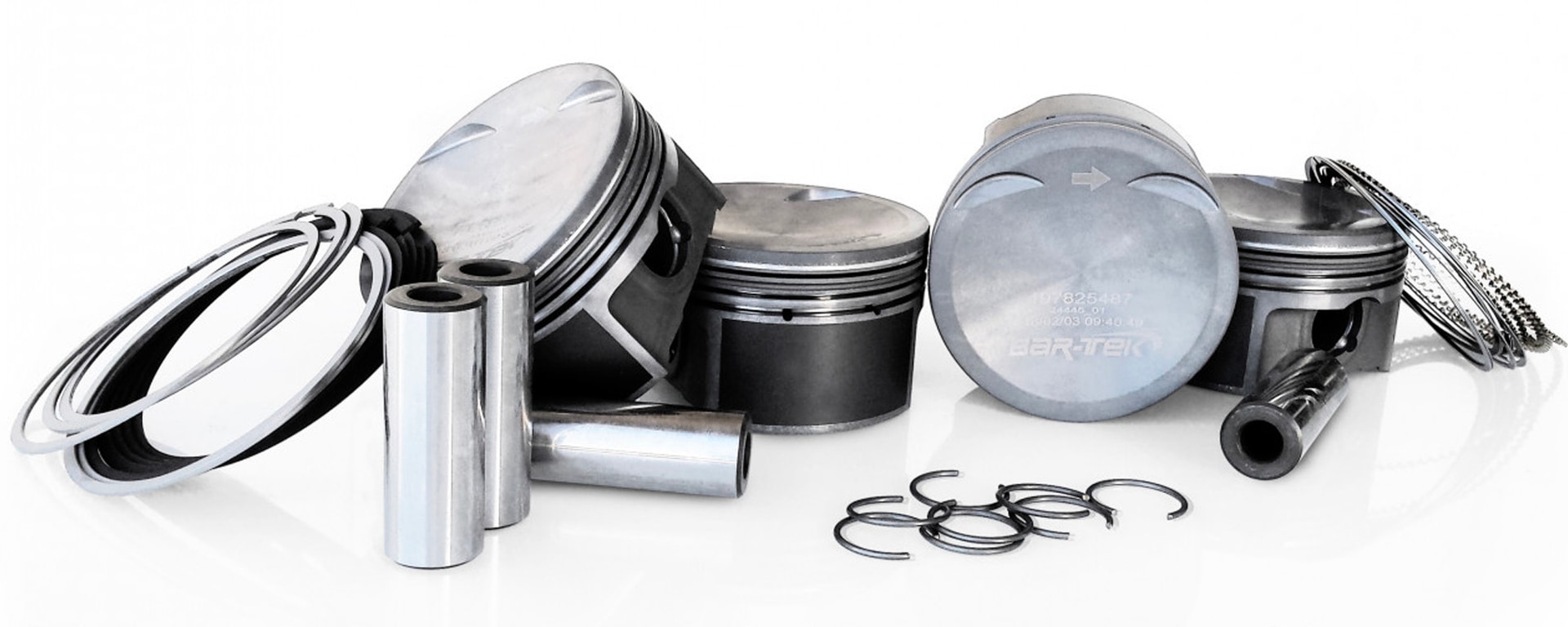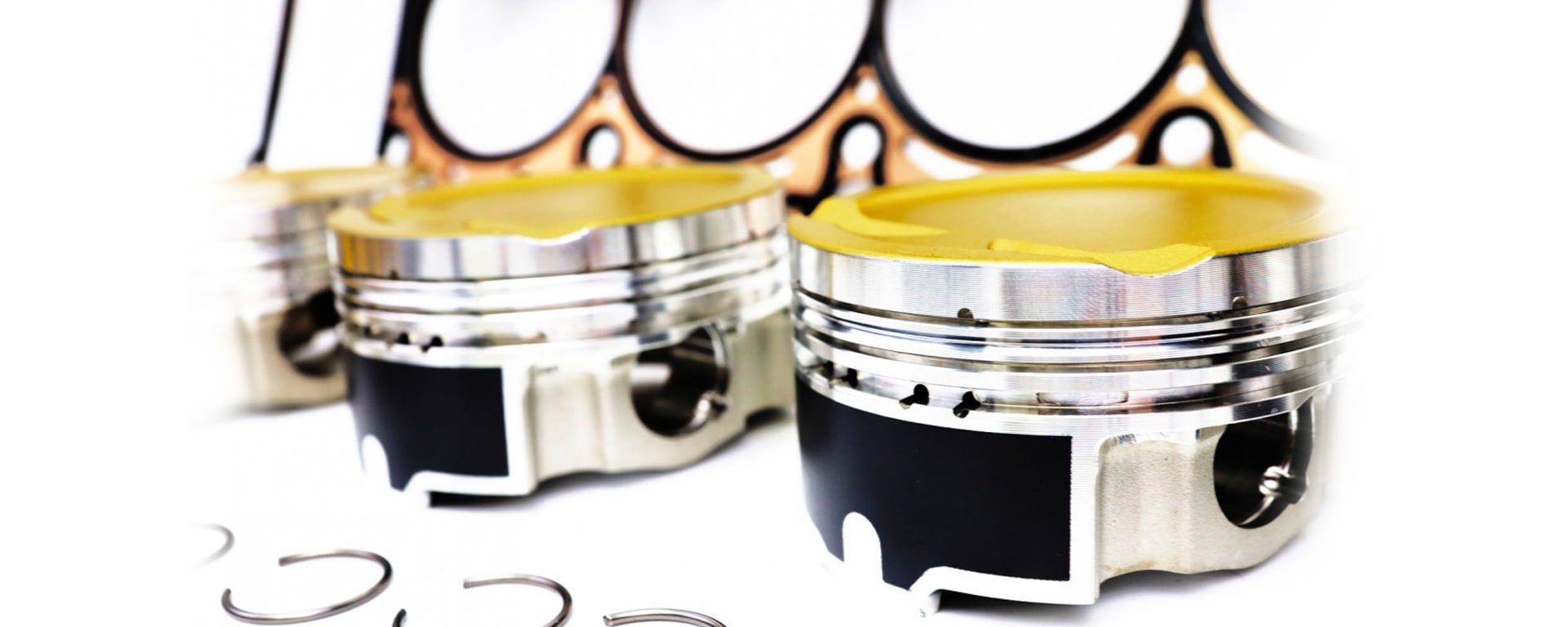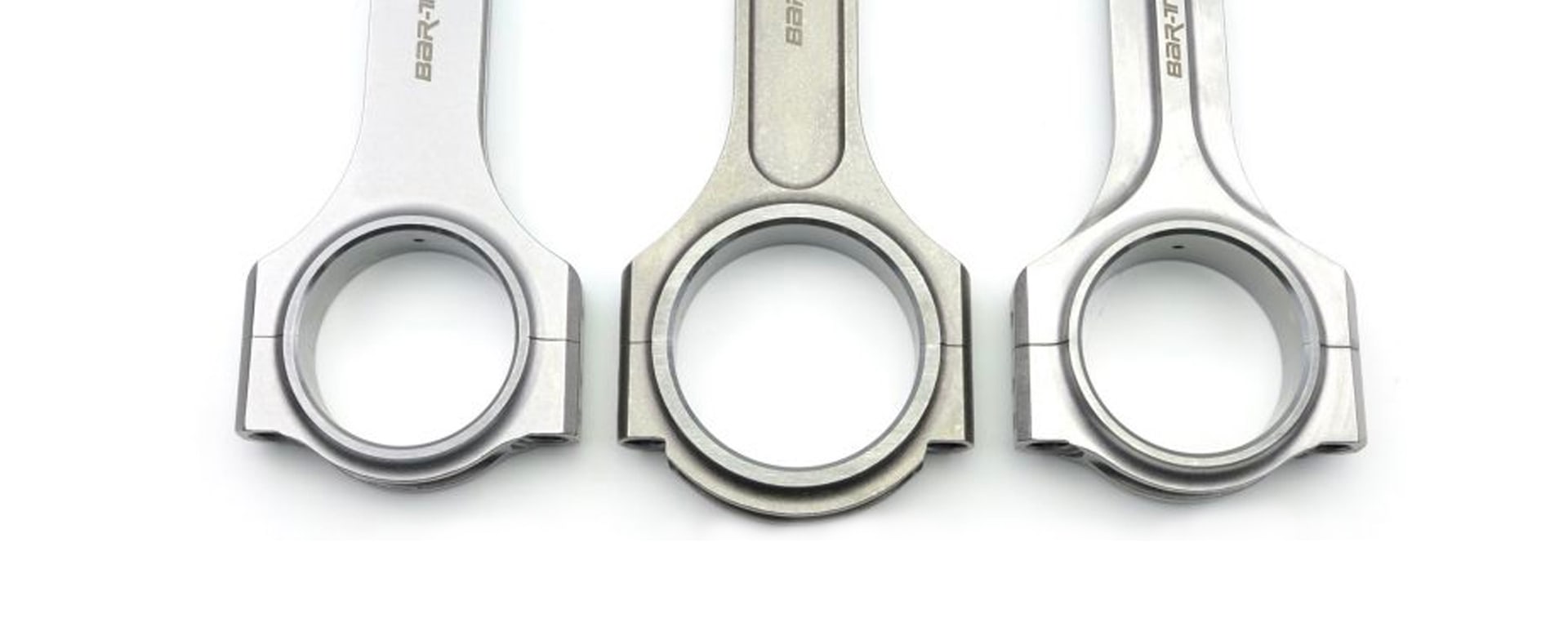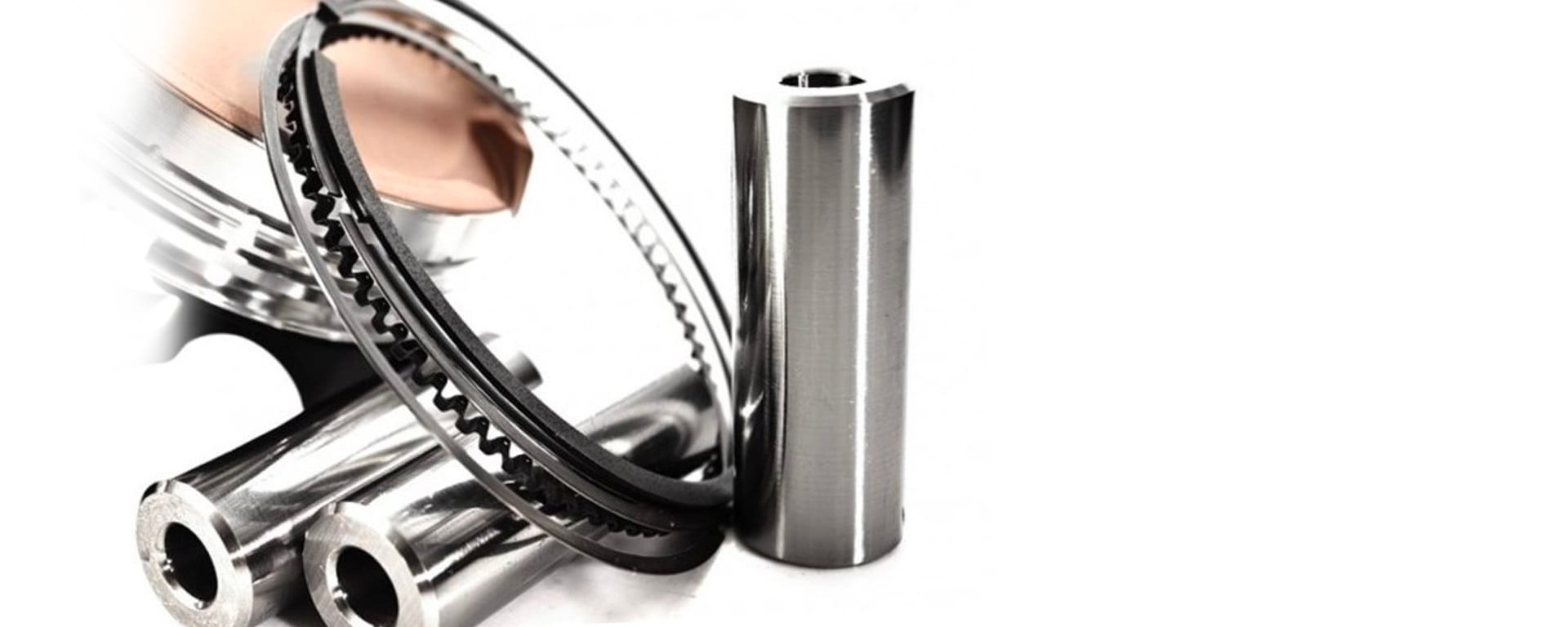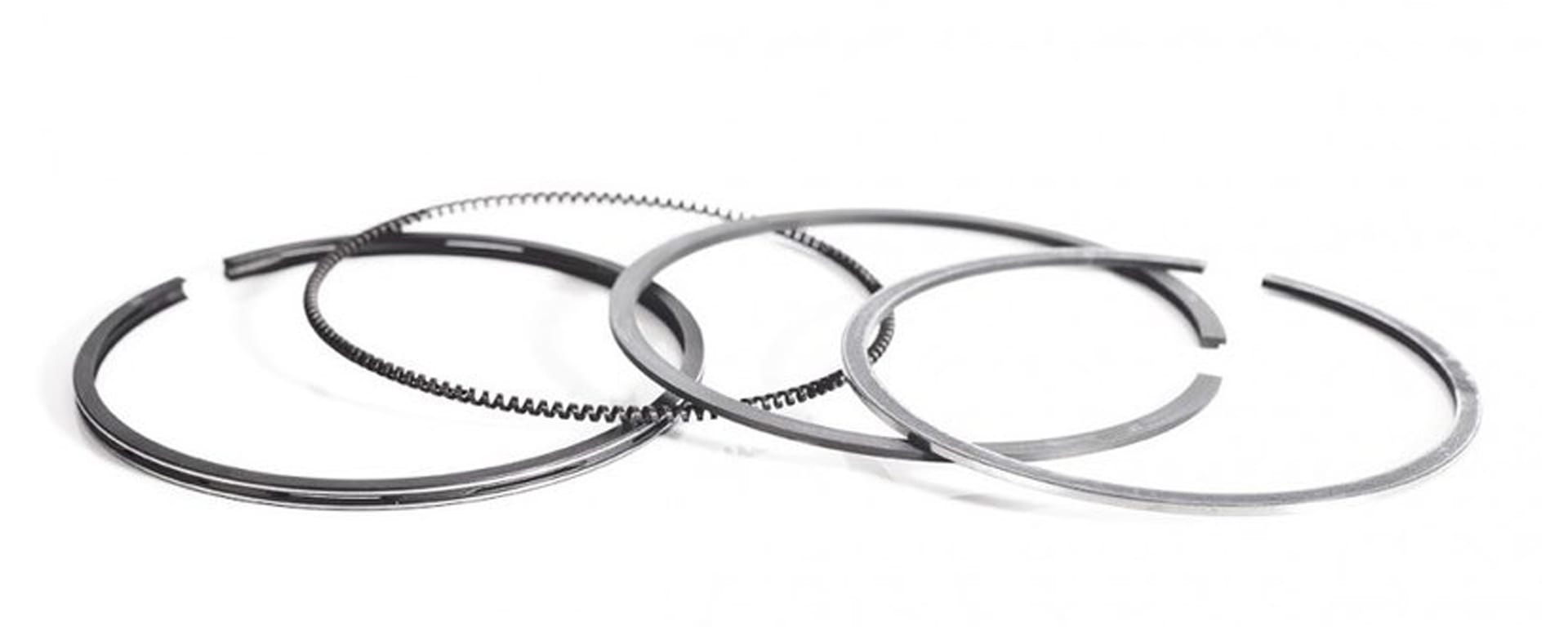

Installing piston rings
If you buy finished standard pistons from VW or Audi, the piston rings are already installed. This is not the case if you build the engine yourself or have a racing engine built by us.
Then, you still have to mount the piston rings on the pistons. Here, you will find out how to prepare pistons, install the piston rings, and then connect the pistons to the connecting rods.
The function – What is the purpose of piston rings?
Piston rings seal off the pistons, among other things. In addition, they ensure that lubricating oil is distributed well, and they transfer heat from the pistons to the cooled cylinder walls. Piston rings do not form a complete circle; they have an opening referred to as the end gap. It isn’t until it is installed that the ring is made circular.
Normally, three piston rings are used per cylinder, with different functions and made of different materials:
- The top ring is the compression ring. It is responsible for sealing and conducting away the heat.
- The middle ring seals the combustion chamber against combustion gases. It also takes handles the supply of oil at the hole.
- The bottom ring is the oil control ring (consisting of three parts). It portions the quantity of lubricating oil on the cylinder wall in which by scraping off the oil.
What is the end gap of the piston rings?
Piston rings have an opening. The distance between the ends of the piston ring when it is installed is referred to as the end gap. This is measured once the piston ring is installed and perpendicular to the cylinder wall. To insert the piston ring, you can use special tools, the piston itself or your bare hands. When we talk about installing piston rings, this includes adjusting the end gap. Further below, you will see how to properly adjust the gap.
Why do you need new pistons and piston rings with tuning?
If you need new pistons for your standard engine, you can also install serial pistons. These come completely assembled, with the piston rings already fitted in the right spot. With tuning, things are different. Here, such high forces are at play that standard pistons cannot withstand the load through the higher charge pressure, etc. The dimensions of the hole also are no longer correct if we build the engine with the next-higher hole. The compression is another reason why standard pistons do not work with tuning. Here, we considerably lower the compression, because for more power, we also need higher charge pressure. An indicator for lower compression is the size of the depression in the piston head: the larger the depression, the lower the compression.
Installing piston rings: how to set the end gap correctly
You not only have to check your piston rings’ end gap – you have to adjust it too. You can do this individually for each cylinder. Remember to note the measured values in your report. There, you can enter the hole and the end gap, among other things. This way, you always have the values on hand if you wish to change something again. With your pistons, there are always installation instructions included, the ‘ring installation guidelines’. Follow these steps to adjust the end gap:
- Sort the pistons and the corresponding piston rings in the correct order. This leads to the least-possible errors.
- Observe the installation direction: The recesses in the piston are deeper on the inlet side.
- The first piston ring glistens, while the second is darker and matt. The marking on the ring points upwards.
- You then push the ring you want to work on into the cylinder. For this purpose, we have a special plastic tool we have come up with ourselves. You can also remove the piston. Make sure that the piston ring is really fitted parallel to the opening.
- Next, you need feeler gauges to measure the end gap. The size of gap you need depends on your engine, your requirements, etc.
- If the feeler gauge does not fit into the gap, you must grind down the piston ring. Do only one side to obtain an optimal result. Proceed slowly and gradually – don’t grind off too much too fast.
- Remove any dirtiness from the piston ring and check whether the ends are straight.
- Use the feeler gauge to check once again and adjust the piston ring until you have reached the desired gap size.
- Then deburr all sides in order to not scrape grooves into the cylinder.
- When installing a ring on a piston, first fix piston in place.
- Then check whether the piston ring can be turned in the piston or if it gets stuck. If it does get stuck, it must be deburred again.
- If everything is fine, push the ring apart from the ends to put it over the piston (without scratching it).
- Check once again how well it can turn.
- Once you’ve inserted all the rings, turn them such that the edges are not lying one above the other (like a Mercedes star).
- Once the piston is finished, you can install it. We use a Teflon sleeve for this purpose. You can also take a tensioning strap, but we recommend using a funnel.
- Apply plenty of oil to the sleeve, piston, piston rings, and connecting rod bearings.
- Then place the sleeve over the piston with extreme care to pretension the rings.
- Once the cylinder is oiled, you can then insert the pistons in the proper direction of installation. Check once again if everything is correctly aligned. The sleeve must lie on the block. Finally, carefully push the piston into the cylinder.
Need some help?
We will be happy to help you figure out the end gap and even completely take care of building your racing motor. Just give us a call or e-mail us.


























































































